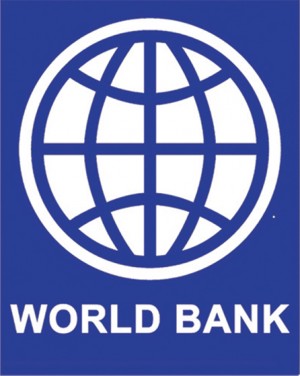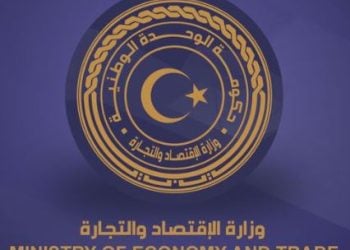By Sami Zaptia.
Tripoli, 8 August 2014:
In its latest report, MENA QUARTERLY ECONOMIC . . .[restrict]BRIEF (Issue 3, July 2014 ) Predictions, Perceptions and Economic Reality – Challenges of seven Middle East and North Africa countries described in 14 Charts, the World Bank warns that recent growth forecasts for the MENA 7 countries (which include Libya) that show a mild economic recovery underway in 2014-15 should be interpreted cautiously since a rosy forecasts for these countries in 2010 did not materialize.
Historical growth trends show that most of the MENA 7 countries were enjoying rapid growth rates at the time of the 2011 revolutions. In the 2000s most of these countries took advantage of the high oil prices starting in 2003, the strong interest of global investors in MENA, combined with a positive trend in tackling some reforms, the World Bank 32 page report explained.
These factors allowed these countries to grow at an average rate of more than 5 percent for a decade, particularly in Egypt, Tunisia, Iran, Lebanon, Jordan, Libya and Yemen.
Most international and national forecasters predicted that this rapid growth would continue in line with the robust trend of the rapid growth in the 2000s, and major international and national forecasters projected that these countries will continue to see rapid growth over the period of 2011-13.
After the 2011 Arab Spring
After the 2011 Arab Spring, however, growth projections for the 7 countries were revised downward. The wide divergence between actual growth and the estimates, particularly after the 2011 uprisings, suggests that these forecasts were over-optimistic.
It should be noted that “optimism bias” is common among forecasters including major international institutions where they also missed the early signs of the 2008 financial crisis.
There are two reasons for this: first, forecasting models are not sensitive to current developments and new information that becomes available at the time of the forecasting. Further, forecasters tend to overlook the economic booms and busts particularly sudden shifts caused by political and geopolitical change.
Second, the inaccuracy of forecasts seems to be sticky; optimistic growth forecasts remain optimistic, pessimistic forecasts remain grim, and over-optimistic forecasts remain over- optimistic over time.
Limitations of growth forecasts
The 2011 uprisings highlighted the limitations of growth forecasts. They neither recognize the alarming signs nor account for structural breaks and exogenous shocks. Although some structural breaks cannot be predicted at all, it is important for forecasters to spot the alarming signs as they happen.
Therefore, recent growth forecasts for the MENA 7 countries that show a mild economic recovery underway in 2014-15 should be interpreted cautiously since we also had rosy forecasts for these countries in 2010, the World Bank warned.
Oil price
Most of the GCC and developing oil exporters in MENA need an oil price of at least $100 per barrel to keep their fiscal budgets in balance. On the other hand, geopolitical tensions especially in Iraq and Libya (that have kept 1 million barrels off the global market), and Russia’s conflict over Ukraine could increase the “risk premium”, keeping international oil prices elevated.
If security concerns subside in Libya?
Notwithstanding these developments, economic estimates are optimistic about the growth recovery in Egypt, Tunisia, Jordan and Iran in 2015 and economic activity could likely resume in the rest of the MENA 7 countries provided that security concerns subside in Libya, Lebanon and Yemen.
However, the pace of the projected growth remains far below the rate of the rapid growth that all of the MENA 7 countries experienced in the 2000s. Moreover, the sustainability of growth remains uncertain as these economies have been long suffering from structural problems which have restrained them from moving to a higher and sustainable growth path.
Libya lackluster due to growing insecurity
In Yemen and Libya, the economic situation has remained lackluster due to growing insecurity. Libya is still gripped by instability and the battle between the militia and the government is holding back economic activity in the country.
Oil production (a major contributor to the government’s finances and output) is still low – at 500 thousand barrels per day (bpd) in July – compared to the pre 2011 level of about 1.4 million bpd.
There is growing speculation that oil production can increase within the next year provided that the ongoing violence subsides. However, production recovery could take longer due to the extensive repairs and maintenance that would be needed.
Increased government spending on fuel and food subsidies public sector wage bill
In response to popular discontent in the region, governments increased spending–particularly on fuel and food subsidies and the public sector wage bill putting further pressure on government budgets.
For example the bulk of the 2014 budget deficit in Libya goes to subsides and salaries. Gross government debt has also increased substantially after 2011 to finance the budget deficit, particularly in Egypt.
Subsidy reform
An effective way to lower the fiscal deficit is to remove fuel subsidies and replace them with cash transfers that are targeted to the poor. This could produce significant fiscal savings and lower the burden on these countries’ budget.
Part of the fiscal savings could be used to strengthen the social safety nets accompanied by an increase in spending both on health and education. Of course, governments need to put an extensive preparedness plan in place to raise public awareness about the subsidy removal in advance.
General subsidies including fuels and food account for more than 10 percent of GDP and at least 20 percent of total expenditures in all MENA 7 countries (except in Iran). For example, food and fuel subsidies in Libya exceed government’s social spending on health and education; Egypt spends seven times more on fuel subsidies than on health. Yemen spent a third of its revenue on general food and fuel subsidies in 2013.
While there have been some efforts to rationalize subsidies in Jordan, Tunisia and Egypt, reform remains a thorny issue in the rest of the MENA 7 countries
International reserves have been depleting in almost all MENA 7
International reserves have been depleting in almost all MENA 7 countries particularly in Egypt where the latest data show that net international reserves reached less than half of the total reserves prior to the revolution.
Libya and Iran have had to dig into their (albeit sizable) stock of reserves to finance their growing budget deficits in 2013 and 2014. Both countries suffer from declining oil export receipts. Libya will drain their foreign reserves by at least one third in 2015, the World Bank warns.
Unemployment rates have remained stubbornly high particularly among youth
Along with slow growth, unemployment rates have remained stubbornly high particularly among youth (15–24 years) with an average rate of 22 percent for young males and 39 percent for young females in the MENA 7 countries.
For example, some estimates show that the youth unemployment rate is as high as 40 percent in Tunisia. The gender gap in unemployment is also large.
While unemployment has been exacerbated by the slowdown in economic growth, much of it is due to long-standing structural factors on both the labor supply and demand sides.
A salient feature of unemployment in these countries is that it is higher among the more educated: One reason for the high rate of youth unemployment in MENA 7 countries is that many educated young people are willing to wait for jobs in the public sector to open up. Public sector jobs are attractive since they offer high salaries, job security, and good benefits.
Corruption and cronyism, distorted economies, weak private sector and poor governance
Corruption and cronyism is perceived to be widespread in all of MENA 7 countries and have distorted the economies in the form of weak private sector and poor governance. All of these countries have performed poorly on indicators of transparency, voice and accountability.
Perceptions index estimates calculated by the Transparency International Corruption shows that the MENA region scored lower than the world median in 2013. Among them, the MENA 7 countries were widely perceived as very corrupt with an average score of 29, ranging from Libya with a score of 15 to Jordan with a score of 45 (Score ranges between 0 being highly corrupted, and 100 being very clean).
The private sector in the MENA region, particularly in the MENA 7 countries, is not dynamic due to a weak regulatory environment and limited access to credit mostly. The public sector including state owned enterprises (SOE) is large in size and has privileges in all aspects of the economy leaving little space for the private sector to grow.
In the World Bank’s indicators that capture the quality of the business environment, all of these countries are ranked towards the lower end of the spectrum. For example, the ease of doing business indicators ranked Libya, Iran, and Egypt close to the bottom of the list in 2013 with Libya standing at 187th out of 189 countries.
One of the constraints in improving private sector activity is access to credit and foreign exchange, which are mostly allocated to the elite. Furthermore, laws and regulations related to investor protections are not clear and limit the ability of investors to raise capital.
The informal sector
Finally, most of the labor force in these countries is not unemployed. They are engaged in the informal sector, either as self-employed or in household enterprises. These people, who are not part of the unemployment statistics, are in an even worse situation, since they lack any security in their earnings. Yet they have to work because they, or their families, cannot afford to have them unemployed and looking for a job. They are the most vulnerable segments of the population.
Informal sectors are large and have been expanding in the MENA 7 countries. They consist of small firms that are disconnected from the formal sector and suffer from low productivity because of the nature of the sector which requires less capital, less skilled labor and less investment.
Workers in the informal sector lack social security coverage and medical insurance and have fewer possibilities to participate in formal education and training program. These are vulnerable people and are significantly exposed to exogenous shocks. The IMF estimates that informality rates across these countries range from 17 percent in Jordan to 35 percent in Tunisia.
Informal sectors are associated with developing countries, and some estimates show that about 60 percent of the labor force work in the informal sector. Governments can support the informal sector by enforcing regulations and improving access to markets and finance for the firms, and supporting the workers by creating both a safer work places and access to social services.
A “poor policy – poor growth” cycle
A “poor policy – poor growth” cycle mainly characterized the MENA 7 countries before 2010. While these economies grew rapidly, growth was not sustainable to create jobs. Events post- 2011 suggests that these countries are still trapped in the “poor policy-poor growth” cycle.
Economic growth continues to be weak and cannot generate enough jobs, fiscal deficits are still high and public debts are growing at a faster pace than before, leaving little space for growth- promoting investment. Private sector activities are sluggish, and the few jobs that are created in the public sector are filled through connections, leaving young people frustrated.
Many workers move to the informal sector, creating a large vulnerable group exposed to external shocks. World Bank estimates show that by growing at 5 percent per year (the same pace as the last decade), MENA can create 24 million jobs in the next 7 years (2014-20). This is just enough to keep the unemployment rate from rising. The region will need to create at least 30 million jobs for the same period in order to make a dent in the high unemployment rate.
This requires an annual growth rate of at least 6.5 percent, about 1 percentage point higher than the average growth in the last decade. The growth rate required for the MENA 7 countries is estimated to be even higher, exceeding 7 percent. To break the cycle, growth rates need to more than double from their current low levels in all of the MENA 7 countries.
Further, growth sustainability can be achieved with prompt acceleration in reforms paving the way for the private sector to become a growth driver and create jobs.
There is a risk of policy error if policymakers trust economic forecasts that construct a positive outlook for their economies and resist necessary reforms. Studies have shown that there is an optimism bias in growth forecasts for developing regions and in particular for MENA.
One reason is that forecasting models do not necessarily take into account both new information that comes in at the last minute, and the underlying factors that contribute to the well-being of the economy. More importantly, economic forecasts tend to overlook the alarming signs of structural breaks and the boom and bust cycles in the economy.
At this important juncture, governments in the MENA 7 countries need to foster structural reforms, such as targeting of subsidies, strengthening the investment climate, improving governance, and removing rigidities in the product and labor markets. These reforms are necessary whether the short-term economic prospects are rosy or gloomy, concludes the World Bank report. [/restrict]










